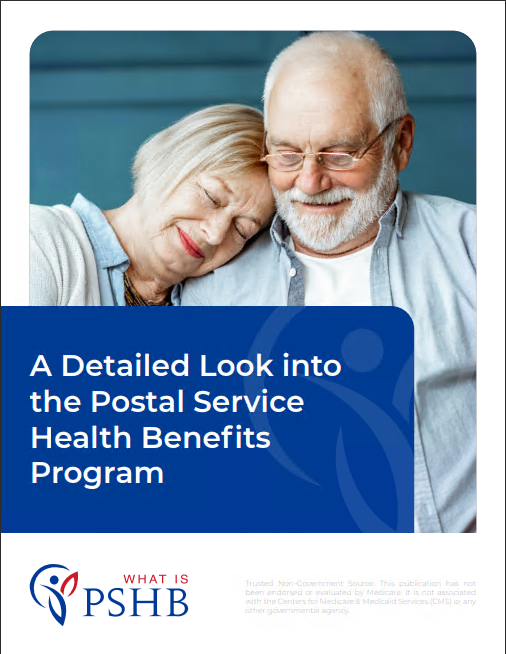Key Takeaways
-
Medicare Supplement (Medigap) plans and Postal Service Health Benefits (PSHB) can work together to provide additional coverage, but the coordination of benefits depends on whether you have Medicare.
-
Understanding how deductibles, out-of-pocket costs, and provider networks differ between PSHB and Medicare Supplement plans can help you make the best decision for your healthcare needs.
Understanding Medicare Supplement Plans and PSHB Coverage
If you’re a retired postal worker or approaching retirement, you might be wondering how Medicare Supplement (Medigap) plans fit into your Postal Service Health Benefits (PSHB) coverage. While PSHB provides comprehensive benefits, you may still have out-of-pocket costs that Medicare Supplement plans can help cover. But before making any decisions, it’s crucial to understand how these plans work together and what factors you should consider. Here are five key things to keep in mind when evaluating your options.
1. Coordination of Benefits: How PSHB Works with Medicare
PSHB plans are designed to work seamlessly with Medicare. If you’re eligible for Medicare and enrolled in both Medicare Part A and Part B, your PSHB plan typically acts as secondary coverage. This means Medicare pays first for covered services, and your PSHB plan picks up some or all of the remaining costs, depending on your specific plan.
Where Medicare Supplement Plans Fit In
Medicare Supplement plans step in to cover gaps left by Original Medicare, such as deductibles, copayments, and coinsurance. However, if you have a PSHB plan that already fills many of these gaps, a Medicare Supplement plan may not be necessary. Understanding the level of coverage your PSHB plan offers is key before considering a Medigap policy.
2. Out-of-Pocket Costs: What’s Covered and What’s Not
Even with PSHB coverage, there are still some healthcare costs you may be responsible for. These can include:
-
Deductibles – Both PSHB and Medicare have deductibles that must be met before coverage kicks in.
-
Coinsurance and Copayments – While PSHB plans cover a portion of these costs, they may not cover everything.
-
Services Outside the PSHB Network – Some services may have higher out-of-pocket costs if you go out of network.
Medicare Supplement plans help reduce these expenses by covering certain Medicare-approved costs that PSHB may not fully pay for. However, PSHB enrollees should compare their plan benefits to ensure they aren’t paying for redundant coverage.
3. Medicare Supplement Plans vs. PSHB: A Cost Comparison
One of the biggest factors when choosing additional coverage is cost. While PSHB plans provide a strong foundation of benefits, adding a Medicare Supplement plan means additional premiums. To determine if it’s worth it, consider:
-
Annual Out-of-Pocket Maximums – PSHB plans have caps on your out-of-pocket costs, whereas Medicare alone does not.
-
Medicare Supplement Premiums – These vary depending on the plan type and your location.
-
PSHB Plan Contributions – Government contributions cover a significant portion of PSHB premiums, making it a cost-effective option for many retirees.
If your PSHB plan already covers most of what a Medigap policy would, you may not need the extra expense. Always review your total healthcare spending before making a decision.
4. Provider Access: Medicare Supplement vs. PSHB Networks
Access to healthcare providers is another important factor. With PSHB, you typically have a network of doctors and hospitals, but:
-
Some PSHB plans allow you to see any provider who accepts Medicare.
-
Others may require referrals or in-network providers for full benefits.
Medicare Supplement plans, on the other hand, allow you to see any doctor or specialist who accepts Medicare nationwide. If you travel frequently or live in multiple states throughout the year, this flexibility may be beneficial.
5. Prescription Drug Coverage: Understanding Your Options
PSHB plans include prescription drug coverage, which is an advantage over Original Medicare alone. If you enroll in a Medicare Supplement plan, it does not include drug coverage, meaning you would need to enroll in a separate Medicare Part D plan for prescriptions.
What to Consider:
-
If you stay with PSHB, your prescriptions are covered through your plan’s drug benefits.
-
If you drop PSHB for Medicare and Medigap, you’ll need Part D for prescription drugs.
-
Check formularies, as drug costs and covered medications may differ between PSHB and standalone Part D plans.
This makes staying with PSHB more convenient for many retirees who don’t want to manage multiple separate plans.
Making the Best Decision for Your Healthcare Needs
Ultimately, whether you need a Medicare Supplement plan alongside PSHB depends on your healthcare needs, budget, and coverage preferences. Before making a decision, consider:
-
How often you visit doctors or specialists.
-
Whether you travel frequently and need nationwide coverage.
-
Your comfort level with out-of-pocket costs versus paying an extra premium for additional coverage.
PSHB already provides strong coverage, and for many retirees, it eliminates the need for a separate Medicare Supplement plan. However, for those who want even more protection from unexpected medical expenses, it may still be worth exploring options.
What You Can Do Next
If you’re unsure about your coverage needs, speaking with a licensed agent listed on this website can help you compare your options and find the best fit for your situation. An agent can walk you through the specifics of PSHB and Medicare Supplement plans so you can make an informed decision.






